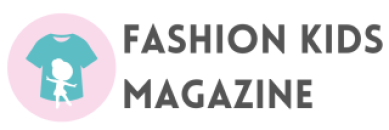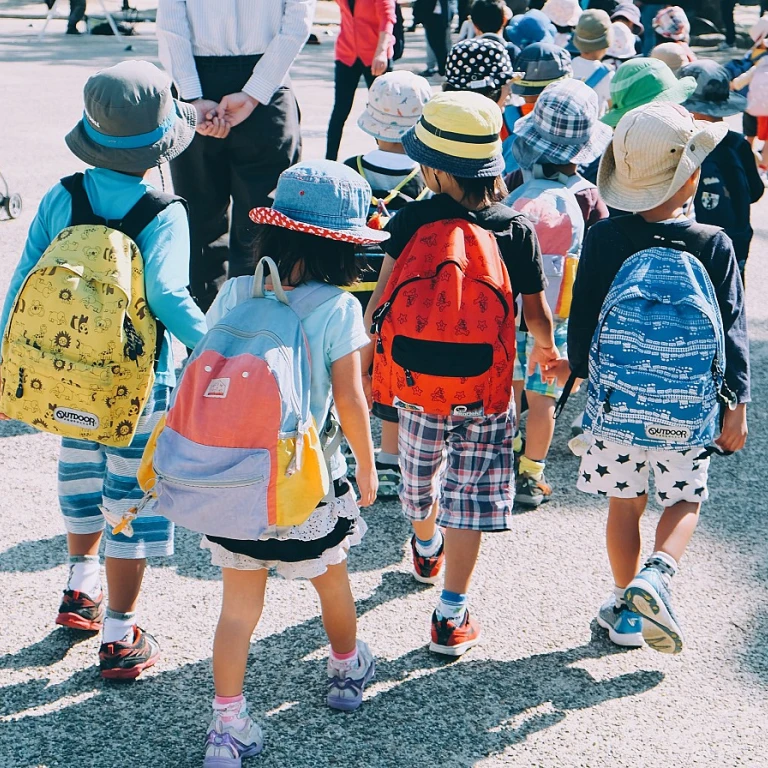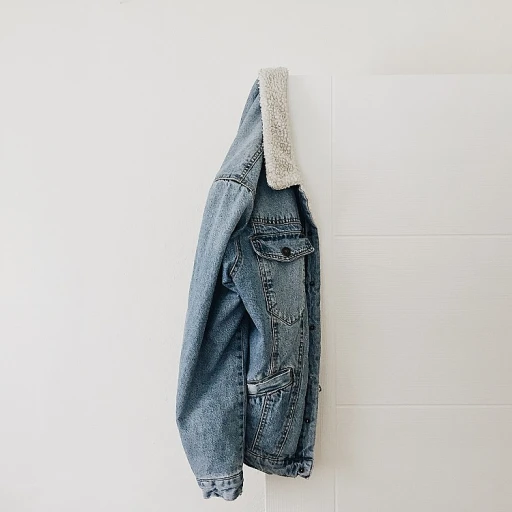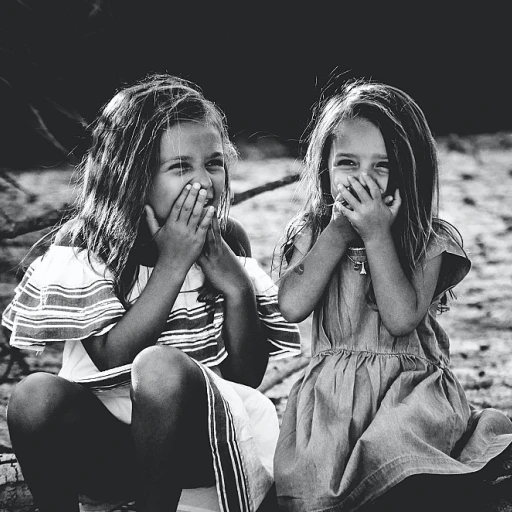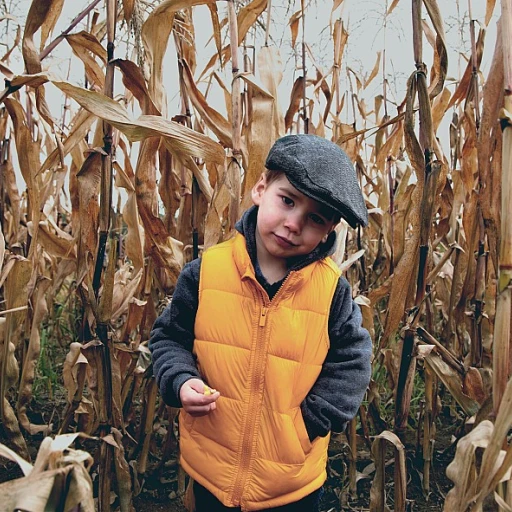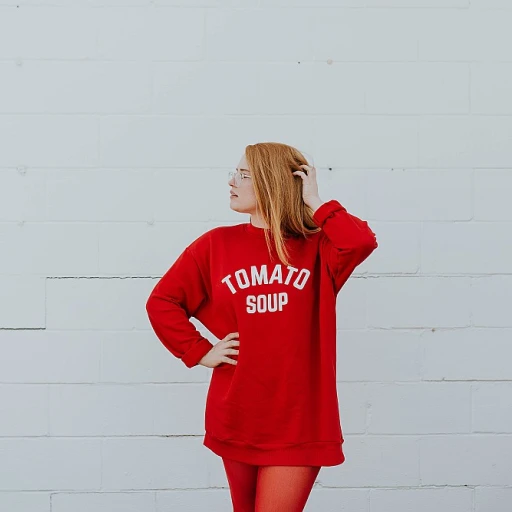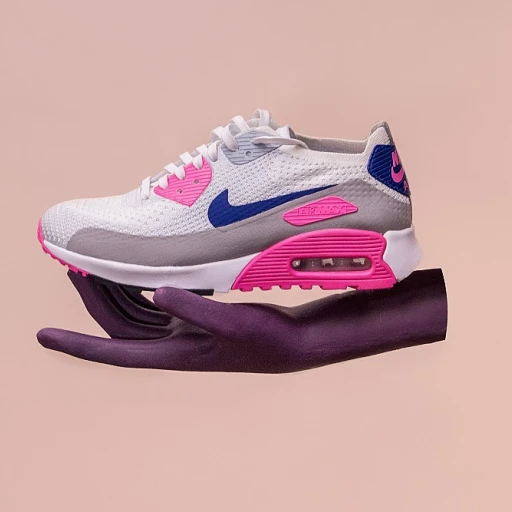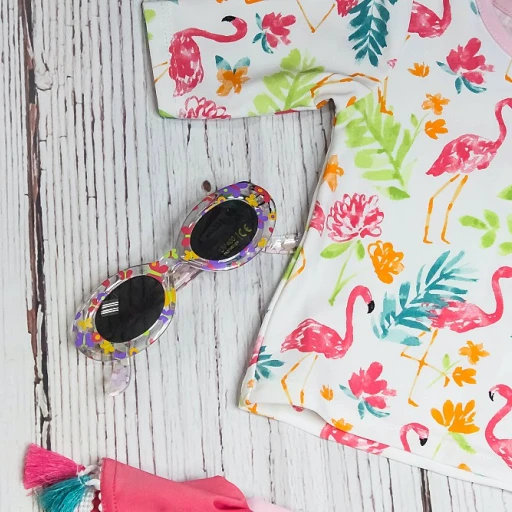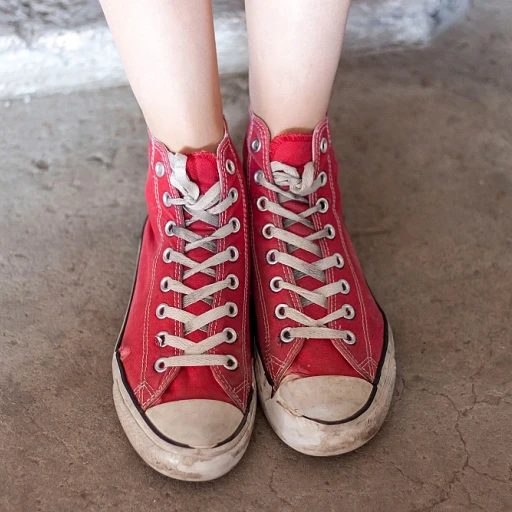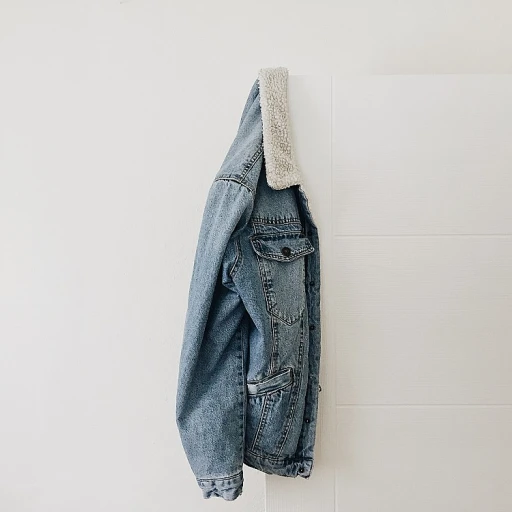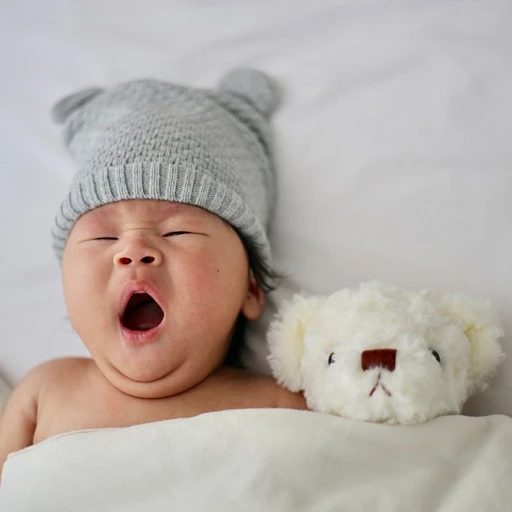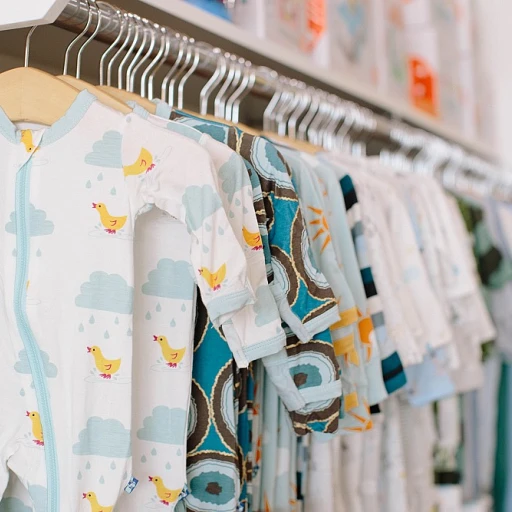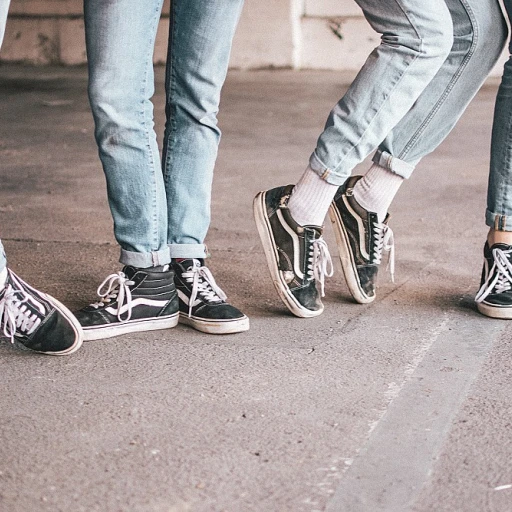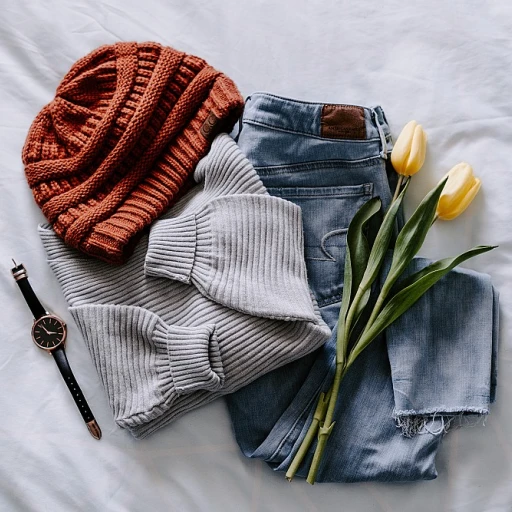
The rise of sustainable baby clothes
From niche to necessity: sustainable baby clothing goes mainstream
Sustainable baby clothes have experienced a remarkable surge in popularity over the past few years. According to a study by the Global Organic Textile Standard (GOTS), there has been a 20% year-on-year increase in the production of certified organic baby clothing. This uptick reflects growing consumer awareness and commitment to eco-friendly practices, reshaping the baby clothing industry.Shifting consumer preferences
Parents today are increasingly looking for sustainable options for their little ones. A 2022 survey by Cotton Incorporated revealed that 78% of parents consider the sustainability of baby clothes when making a purchase decision. They want soft, safe fabrics free from harmful chemicals. With the rise of eco-conscious parenting, sustainable products are no longer a luxury but a necessity.The influence of social media and celebrity endorsements
Social media has played a crucial role in the rise of sustainable baby clothing. Instagram, for instance, is awash with influencers and celebrities like Jessica Alba and her Honest Company, promoting organic and sustainable baby products. This visibility has helped mainstream the idea that sustainable baby clothes are the gold standard. In fact, brands reported a 35% boost in sales following endorsements by celebrities in 2021, according to Fashion Network.A competitive market
The market for sustainable baby clothes is growing fast. Brands like Burt’s Bees Baby, Kate Quinn, and Hanna Andersson are leading the charge, providing baby clothing that is not only sustainable but also stylish and affordable. These brands have set a precedent, proving that you don't have to sacrifice style or break the bank to go green. Burt’s Bees Baby, for instance, saw a 50% increase in sales after launching its GOTS-certified organic cotton line.Environmental and ethical benefits
Beyond the trendy appeal, the environmental and ethical benefits of sustainable baby clothes are immense. The fashion industry is one of the largest polluters globally, and by opting for GOTS-certified cotton or bamboo fabric, brands significantly reduce their environmental footprint. According to a report by the Environmental Protection Agency (EPA), sustainable clothing manufacturing can reduce water usage by up to 91% and energy consumption by 62%. Ethically produced clothing also ensures safe working conditions and fair wages, contributing to fair trade practices.Resources for savvy shoppers
For parents interested in finding the best deals and styles for your little ones, it’s essential to know where and how to shop for sustainable baby clothes. Look out for sales, second-hand options, and discount sites to snag great deals on high-quality, eco-friendly clothing. By making informed choices, you can contribute to a healthier planet while ensuring your baby wears the best. Through such practices, we see how the rise of sustainable baby clothes is a win-win, making a positive impact on both our children and the environment.Why choose organic cotton for baby clothing?
Why organic cotton is the baby's best friend
When it comes to dressing our little ones in the softest, safest, and most sustainable way possible, organic cotton is a clear winner. Not only is it incredibly gentle on a baby's delicate skin, but it's also free from harmful chemicals and pesticides. The Global Organic Textile Standard (GOTS) ensures that the cotton in your baby's clothes meets strict environmental and social criteria. According to GOTS, over 80% of organic cotton is grown in countries like India, China, Turkey, and Tanzania.
Boosting the skin's comfort
One of the main benefits of organic cotton is its unmatched softness. Traditional cotton farming often uses harsh chemicals that can irritate sensitive skin, causing rashes and discomfort. GOTS-certified organic cotton, on the other hand, avoids these chemicals, making it ideal for baby clothes. A parent from Los Angeles shared, "Since switching to organic baby clothing, we haven't faced any issues with skin irritation."
Environmental advantages
The production of organic cotton is significantly better for the environment. It reduces water usage by about 91% and energy consumption by 62% compared to conventional farming, according to the Textile Exchange's 2021 Organic Cotton Market Report. Additionally, organic farming practices help maintain soil fertility and promote biodiversity, ensuring a sustainable future for our kids.
Supporting ethical labor practices
Organic cotton farming is not just about the environment; it's also about promoting fair labor practices. Brands such as Kate Quinn and Hanna Andersson are committed to ensuring safe working conditions and fair wages for their farmers and workers. The Fair Trade certification is a testament to these ethical practices, protecting workers from exploitation and ensuring they benefit directly from their labor.
Durability and value for money
While the regular price of organic baby clothes might be higher than their conventional counterparts, the long-term benefits are worth the investment. Organic cotton fibers are stronger and more durable, meaning your baby's clothes will last longer. This durability can save money in the long run, as you won't need to replace items as frequently. As one satisfied parent put it, "The investment in GOTS certified organic clothing has paid off; our hand-me-downs still look and feel new after multiple washes."
Top sustainable baby clothing brands
Baby clothing brands making a difference
It's not just about the fabric; it's about the people behind the clothes. Let's introduce you to some standout brands that are leading the way with sustainable baby clothes. From organic cotton to bamboo, these brands are creating clothes that are as kind to your baby's skin as they are to the earth.
1. Burt's Bees Baby: Known for their GOTS certified organic cotton products, Burt's Bees Baby offers soft, safe, and sustainable clothing options. Their certification ensures that their production processes meet stringent environmental and social criteria. According to reviews, parents love the comfort and quality of their rompers and onesies. Explore more about their baby clothing range.
2. Hanna Andersson: With a longstanding commitment to organic cotton and fair trade, Hanna Andersson’s clothes are perfect for kids of all ages. They focus on durability and comfort, and their designs are always adorable. Their use of organic cotton ensures that the clothes are free from harmful chemicals, making them safe for your baby's delicate skin.
3. Kate Quinn: This brand offers baby clothes made from certified organic cotton and bamboo, perfect for parents looking for eco-friendly options. Kate Quinn's collections are inspired by nature and crafted with great attention to detail. Their sustainable fashion approach ensures minimal impact on the environment.
4. Boody: Boody's baby clothes are made from bamboo, making them incredibly soft and breathable. Bamboo is a fast-growing plant that's naturally pest-resistant, reducing the need for harmful pesticides. This makes Boody’s products both eco-friendly and perfect for sensitive baby skin.
5. Nui Organics: Hailing from New Zealand and Australia, Nui Organics uses GOTS certified organic cotton and wool in their baby clothing line. They focus on creating timeless pieces that are both stylish and sustainable. Their commitment to safe working conditions and fair trade practices makes them a brand you can feel good about supporting.
6. Aster & Oak: This Australian brand specializes in GOTS certified organic cotton baby clothing. Aster & Oak's designs are whimsical and unique, often featuring hand-drawn illustrations. Parents love their commitment to sustainability and the super soft feel of their products.
A growing number of brands are jumping on the sustainable fashion bandwagon, but these are a few that truly stand out. When shopping for your little one, consider these trusted names that have proven their commitment to quality and the environment. As we move forward, we can expect even more innovations in sustainable baby fashion, driven by both consumer demand and the broader movement towards sustainability.
The benefits of bamboo in baby clothes
Bamboo: a sustainable and comfy choice
When it comes to sustainable baby clothes, bamboo fiber stands out for its remarkable benefits. Many parents have discovered the incredible softness and sustainability of bamboo, which makes it an ideal fabric for sensitive baby skin. Bamboo is naturally hypoallergenic, antibacterial, and moisture-wicking, ensuring that your little one stays comfortable and rash-free.
Environmental benefits of bamboo
Bamboo is an eco-friendly option because it grows rapidly and requires minimal water compared to other plants like cotton. According to a report by the Natural Resources Defense Council (NRDC), bamboo can grow up to 35 inches in just one day, making it one of the most renewable resources out there. Furthermore, it doesn't require pesticides or fertilizers, significantly reducing the environmental impact.
Top bamboo baby clothing brands
Several brands have embraced bamboo for their baby clothing lines, ensuring a combination of sustainability and style. For instance, Boody and Aster & Oak are well-known for their bamboo baby clothing collections. These brands offer a range of products from rompers to dresses, ensuring your baby is both stylish and comfy.
Real-life examples of bamboo's benefits
Kate Quinn, a popular baby clothing brand, often incorporates a blend of organic cotton and bamboo in their products. According to customer reviews, parents love the durability and softness of bamboo fabrics, often noting that their babies experience fewer skin irritations.
“I started using bamboo rompers for my daughter, and I noticed how her eczema has improved significantly,” says Erin, a mom from Los Angeles.
By choosing bamboo baby clothes, you're not just opting for comfort but also making a positive choice for the planet.
Understanding certifications: GOTS, Oeko-Tex, and Fair Trade
Global organic textile standard (GOTS)
The Global Organic Textile Standard (GOTS) certification is one of the most stringent and recognized organic textile standards worldwide. It covers the processing, manufacturing, packaging, labeling, trading, and distribution of all textiles made from at least 70% certified organic natural fibers. A report by the Global Organic Textile Standard International Working Group reveals that as of 2021, over 12,000 GOTS-certified facilities exist in 79 countries. The certification not only ensures that the products are produced organically but also that the working conditions are safe and ethical.
Oeko-Tex standard 100
Oeko-Tex Standard 100 certification focuses primarily on the human ecological aspect of textiles, ensuring that products are free from harmful chemicals. This certification is particularly crucial for baby clothing, as little ones have more sensitive skin. According to the OEKO-TEX® Association, the number of Oeko-Tex Standard 100 certificates issued increased by 4.4% in 2020 compared to the previous year. Brands like Hanna Andersson and Nui Organics are known for adhering to Oeko-Tex standards to make sure their baby clothes are both safe and soft.
Fair trade certification
Fair Trade certification assures that farmers and workers are compensated fairly and work under safe conditions. A Fair Trade International report from 2020 indicates that Fair Trade-certified cotton farms saw a 15% increase in fair wages compared to non-certified farms. Fair Trade-certified brands like Aster & Oak and Boody not only focus on producing quality baby clothes but also ensure that their products are made ethically. The apparel from these brands often features materials like organic cotton and bamboo, which are both environmentally friendly and soft on a baby’s skin.
Insight from industry experts
Experts unanimously agree on the importance of these certifications. Marci Zaroff, a pioneer in sustainable fashion, exclaims, “Certifications like GOTS and Fair Trade are essential as they provide transparency and assurance to consumers that their purchases are making a positive impact.” This is an indication that certifications will continue to be a significant factor in the sustainable baby clothing market.
Case study: burt bees baby and gots certification
A prime example is Burt Bees Baby, a brand known for its GOTS-certified organic cotton clothing. Burt Bees Baby demonstrates how comprehensive adherence to GOTS standards can enhance brand reputation and consumer trust. According to customer reviews, parents love the softness, durability, and ethical production practices of their products, which range from rompers to French Terry cloths.
How to shop for sustainable baby clothes on a budget
Buying sustainable baby clothes without breaking the bank
Purchasing sustainable baby clothes can sometimes feel like a stretch for the wallet, but it doesn't have to be that way. With some pro tips and smart shopping strategies, you can find adorable and eco-friendly outfits for your little one without emptying your pockets.Don’t shy away from sales and discounts
Keep an eye on sales. Many top sustainable baby clothing brands, such as Burt's Bees Baby, often have sales both online and in stores. Websites like Burt’s Bees Baby (https://www.burtsbeesbaby.com/sale) feature limited-time discounts that can help you save on certified organic cotton and other eco-friendly clothes. Sign up for newsletters from your favorite brands – they sometimes send exclusive discount codes.Shopping during off-seasons
Get ahead of the game by purchasing seasonal clothes during off-peak periods. For instance, buy winter wear like french terry rompers during summer sales when retailers are looking to clear stock. Brands like Hanna Andersson and Kate Quinn are known to offer significant markdowns during these times.Consider buying in bundles
Bulk buying or purchasing bundles can also slash the regular price. Brands often offer sets of baby clothing at a lower per-item cost. Look for multipack options of essential items like onesies, hats, and socks. Check brands like Boody and Aster & Oak for bundle deals on organic cotton and cotton bamboo mixes.Second-hand clothes and swapping
Second-hand doesn’t mean second-rate. Sites like Thredup and local second-hand shops have great deals on sustainable baby clothes that are gently used. Additionally, swapping clothes with friends or joining local parenting groups can score you free or very low-cost clothes while ensuring they are reused and stay out of landfills.Diy and upcycling
Get crafty! Upcycling old clothes into new baby items is a fantastic way to save money. If you have an old top made of organic cotton, turn it into a soft baby blanket or hat. There are plenty of tutorials online to guide you through the process.Choosing versatile pieces
Opt for versatile clothing items that can be styled in multiple ways. Neutral colors and gender-neutral designs can be worn across different outfits and can also be handed down to siblings or friends. Think simple, clean designs that pair well with any type of clothing.Seeking out price match guarantees
Many retailers offer price match guarantees. Compare prices online, and if you find a lower price at another shop, some brands will match it. This can be particularly useful when purchasing from well-known stores like Nui Organics and Hanna Andersson. Incorporate these strategies into your shopping habits, and you'll find that sustainable fashion for babies can be both affordable and practical. For more tips on stylish baby clothes, check out our ultimate guide to trendy and comfortable outfits for your little one.The impact of sustainable baby clothes on the environment
Measuring the environmental impact of baby clothing
Choosing sustainable baby clothes does far more than just looking good on your little one. It’s about making a real difference for our planet. Did you know? According to a study published by the Ellen MacArthur Foundation, the fashion industry is responsible for 10% of global carbon emissions. Shocking, right? Now, let’s break down the specifics for baby clothing. Water usage and pollution Producing one kilogram of conventional cotton can use up to 20,000 liters of water. On the flip side, organic cotton farming uses 91% less water. GOTS-certified organic farmers eschew synthetic pesticides and fertilizers, drastically reducing water contamination and protecting ecosystems. The results are staggering—less toxic runoff and healthier water systems. Waste management The fast fashion industry, including kids' clothes, contributes significantly to landfill waste. The Pulse of the Fashion Industry Report highlights that 73% of the world’s clothing eventually ends up in landfills. Brands like Burt’s Bees Baby are turning this tide by promoting sustainable baby clothing, creating garments that are both durable and eco-friendly. Their products are designed to last longer and encourage parents to pass them down, reducing waste. Carbon footprint reduction In a lifecycle analysis of organic cotton conducted by Textile Exchange, it was found that organic cotton farming produces 46% less CO2 compared to conventional methods. This is no small feat. Imagine reducing your baby’s carbon footprint almost by half just by switching to certified organic cotton clothes! Brands that embrace such practices make a huge difference. New Zealand’s Nui Organics and Boody are excellent examples, focusing on sustainable materials like organic cotton bamboo blends, which further lessen environmental impact. Ethical labor practices The environmental benefits are paired with ethical perks. Brands like Aster & Oak and Kate Quinn boast Fair Trade and Oeko-Tex certifications, ensuring that the people who make these adorable clothes work in safe conditions. According to a report by The Global Organic Textile Standard, garments with GOTS certification require adherence to stringent social criteria, which means no child labor and fair wages for workers. Not all brands are doing their part, though. A 2020 investigation by The Guardian revealed that in places like India and China, the exploitation of workers in fast fashion factories is still rampant. That's why choosing brands committed to ethical practices and sustainability is crucial. The clothes you're buying are more than mere fabric; they represent respect for both people and the environment. Switching to eco-friendly baby clothes isn’t just a trend; it’s a necessary shift. By making intentional choices, you’re contributing to a healthier planet for your baby to grow up in. That's a win-win, right?Expert insights on the future of sustainable baby fashion
Innovations shaping sustainable baby fashion
At the heart of sustainable baby fashion is a wave of innovation driven by experts and pioneers in the field. Advances in textile technology, a stronger push for transparency, and a growing community of parents committed to ethical choices are setting the stage for a brighter future.
Advances in textile technology
Innovations like cotton bamboo blends and organic dyes are transforming the landscape of baby clothing. Companies like Boody and Burt’s Bees Baby leverage new materials that are not only soft and comfy but also eco-friendly. Take the example of bamboo fabric – a highly sustainable resource requiring minimal water and pesticides. Its benefits, such as breathability and antibacterial properties, make it perfect for delicate baby skin.
Pioneers leading the way
Brands like Kate Quinn, Hanna Andersson, and Nui Organics are setting benchmarks in sustainable fashion. Kate Quinn stands out for its gender-neutral designs made from certified organic cotton, ensuring safe working conditions for everyone in the supply chain. Hanna Andersson, on the other hand, has long been a favorite for its durability and cute, functional designs, with rave reviews on their organic cotton baby clothes.
Certifications ensuring quality and sustainability
Certifications like the Global Organic Textile Standard (GOTS), Oeko-Tex, and Fair Trade are becoming more prominent. A GOTS certification, for instance, ensures that fabrics meet strict environmental and social criteria throughout the supply chain. Oeko-Tex certified products are free from harmful substances, providing extra peace of mind for parents.
Expert voices on the future
Industry leaders and experts anticipate a continued rise in demand for sustainable baby clothes. According to a report by the Global Organic Textile Standard, consumer interest in certified organic products has increased by 25% over the past five years. Experts like Kimberly Jenkins, a professor at the Parsons School of Design, emphasize the importance of educating consumers about sustainable fashion choices from a young age. “Teaching our kids to value sustainability can have a positive ripple effect,” she says.
Personal stories and real-life examples
Parents like Emily from Los Angeles swear by brands like Aster & Oak for their stylish, organic baby clothing. Emily shares, “I love knowing that my child’s clothes are not only adorable but also made responsibly. Plus, they’re super soft!” Another mom, Sarah from Canada, highlights the affordability of sustainable options: “Shopping during sales makes it easier to find organic cotton clothing at a price that fits my budget.”
For those hunting for deals, resourcefulness goes a long way. Websites like Fashion Kids Magazine offer tips on finding the best deals on baby clothes, making sustainable choices more accessible for everyone.
The future of sustainable baby fashion is undeniably promising, powered by a blend of innovation, responsible practices, and growing consumer awareness. As the industry evolves, we can expect even more creative, affordable, and eco-friendly options for our little ones.
